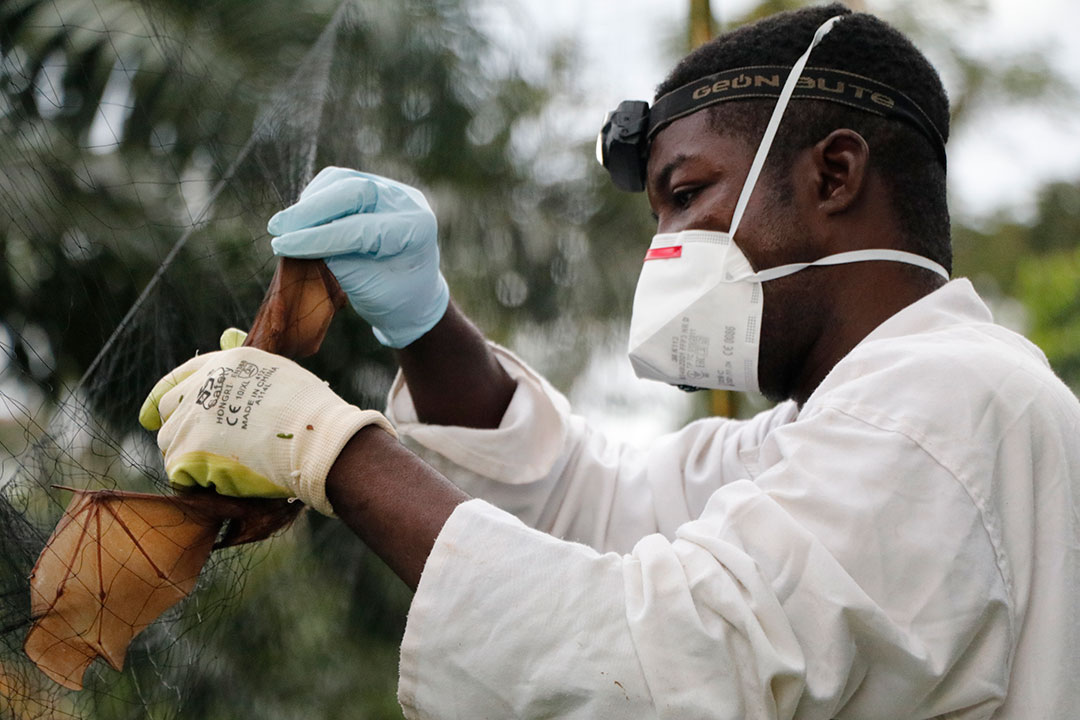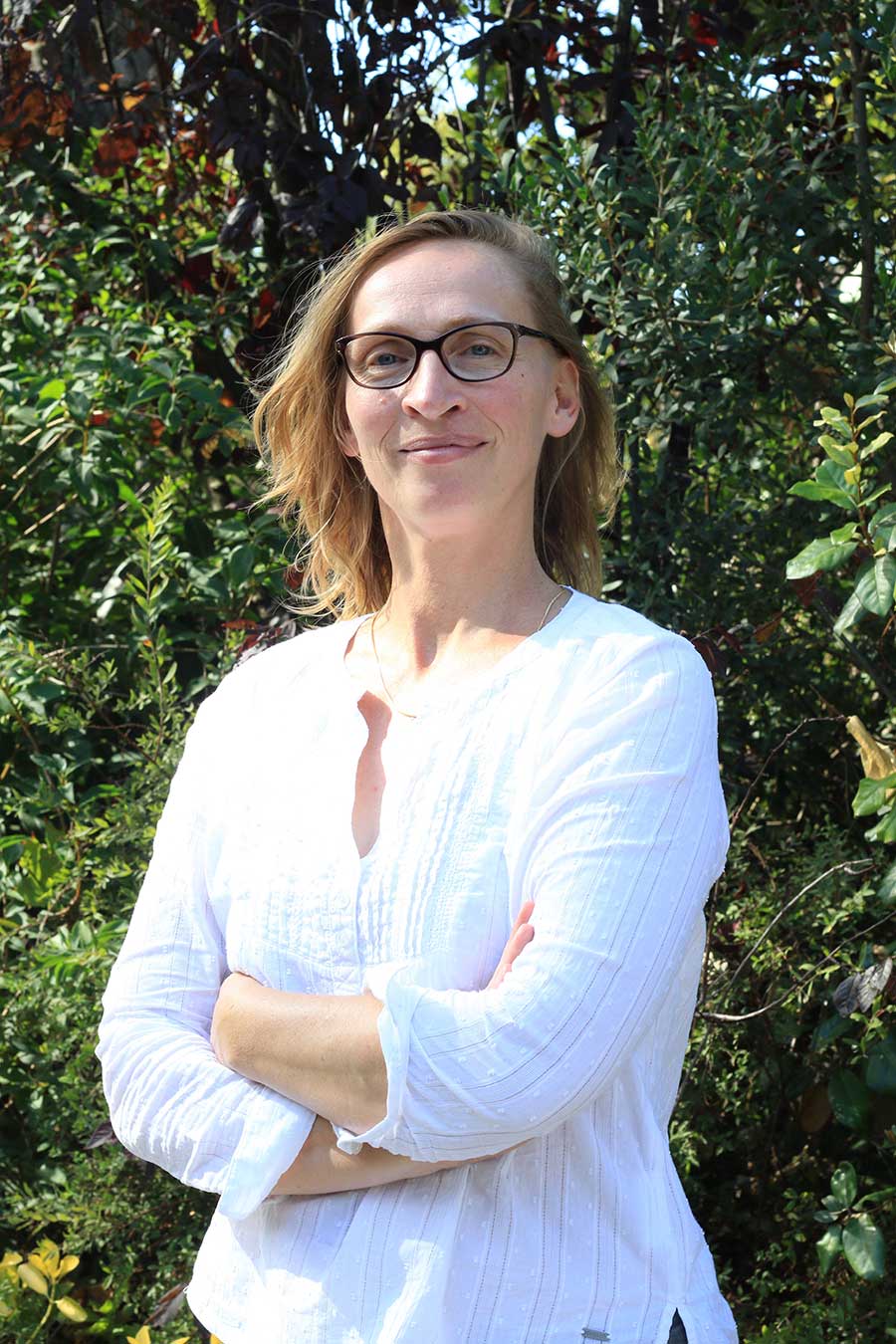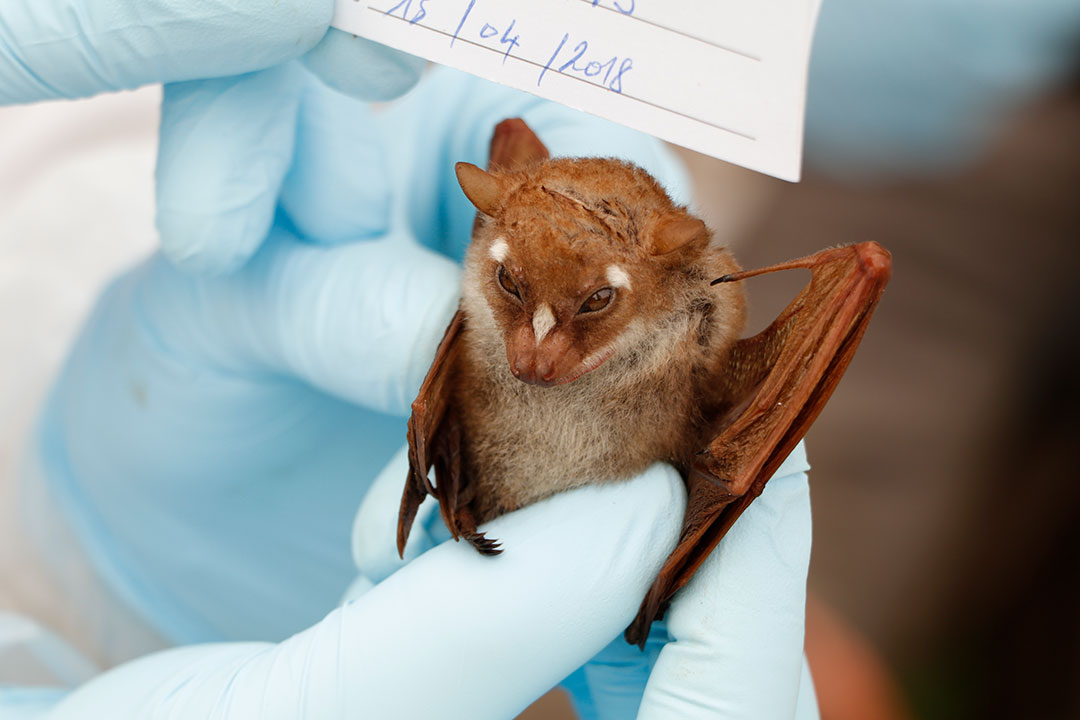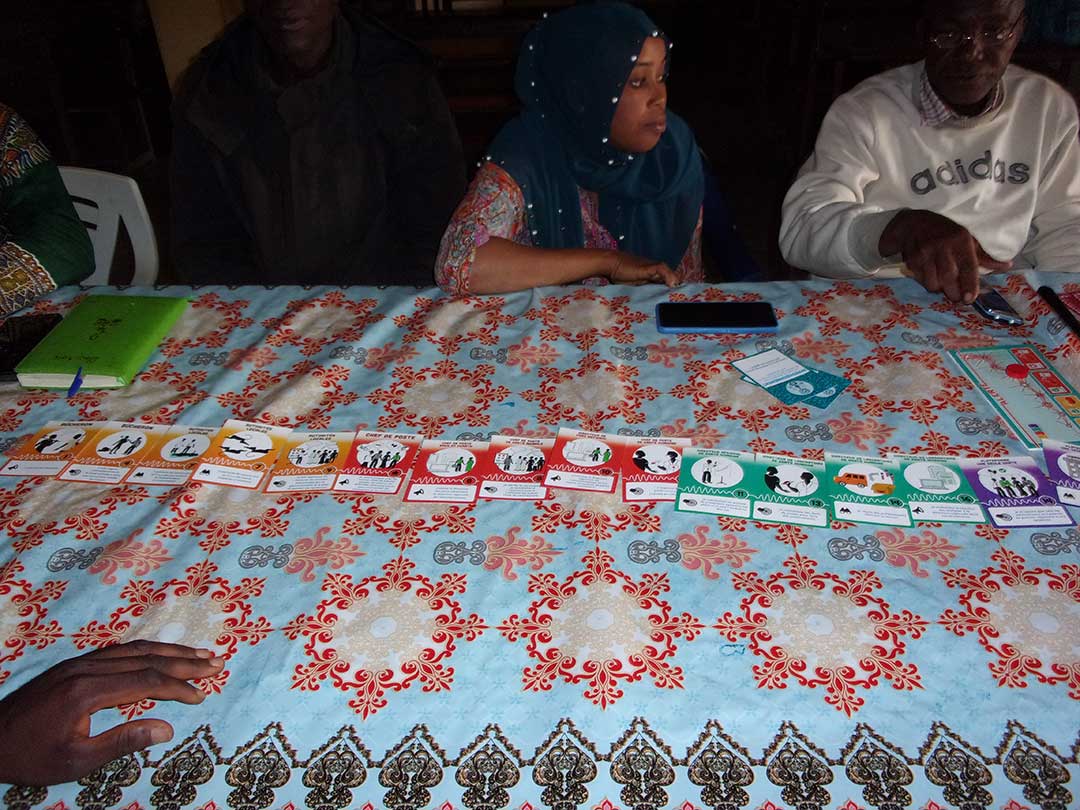Ebola Games: Empowering communities to spot signs of impending outbreaks
The EBO-SURSY Project aims to strengthen surveillance for viral haemorrhagic fevers by forging relationships with remote communities in West and Central Africa.
- 27 September 2022
- 8 min read
- by Linda Geddes

With an average case fatality rate of 50%, and symptoms that can include uncontrollable internal and external bleeding, Ebola ranks high on the list of most terrifying diseases. Yet, for the scientists whose job it is to investigate or contain outbreaks, there is a further terror.
People can catch Ebola through direct contact with a sick or dead person infected with the virus or an infected animal, such as a bat or non-human primate. Such animal-to-human (zoonotic) transmission is considered possible in approximately 23 countries across Central and West Africa, with at least 22 million people living in areas identified as high-risk.
In 2014, the bodies of eight members of a response team who had been trying to spray disinfectant and educate locals about the disease were discovered in a village latrine in a remote area of south-eastern Guinea. Separately, during the 2018–2020 outbreak of Ebola in the Democratic Republic of the Congo, some 483 attacks on health workers were reported, amid widespread suspicion and rumours about their motives.
Building trusting relationships with communities who are at greatest risk of contracting Ebola is crucial if outbreaks are to be rapidly contained. Not only does it help to keep these communities safer, it makes it safer for scientists to investigate the causes of such outbreaks and fill in key knowledge gaps about how viral haemorrhagic fevers spread. Sharing information with these communities also sensitises them to the potential role they can play in wildlife surveillance, such as reporting unusual events in local animal populations, such as outbreaks of disease.
The EBO-SURSY Project aims to strengthen early detection systems for Ebola and four other viral haemorrhagic fevers – Marburg virus disease, Rift Valley fever, Crimean-Congo haemorrhagic fever, and Lassa fever – by building relationships with communities at the interface of human and natural environments in West and Central Africa.
“The hope is to help them understand the key role they can play in early warning systems and also explain that they are part of a bigger surveillance system that includes different health sectors and ranges from local to national, even regional levels,” says Prof Saa Andre Tolno at the Veterinary School of Dalaba in Guinea and PhD student at the French Agricultural Research Centre for International Development (CIRAD), who is involved in these efforts.
“We are trying to demonstrate to them what happens after they inform local authorities or paraprofessionals about an unusual event related to wild animals, for example.
“We are also trying to educate other stakeholders, including from the public health system, and those from animal health, wildlife and environmental sectors, of the importance and role that communities could have in early warning systems.”
People can catch Ebola through direct contact with a sick or dead person infected with the virus or an infected animal, such as a bat or non-human primate. Such animal-to-human (zoonotic) transmission is considered possible in approximately 23 countries across Central and West Africa, with at least 22 million people living in areas identified as high-risk.
“Sometimes it’s very difficult to investigate wildlife when there is a human outbreak because the population is fearful,” says Muset. “But because these teams know the area, and have been doing ongoing sampling for several years, it means that they can be deployed very quickly in the event of an outbreak.”
Though rare, such outbreaks can be extremely deadly. For instance, during the 2014-16 Ebola outbreak in West Africa, 28,616 cases and 11,310 deaths were reported in Guinea, Liberia, and Sierra Leone. A further 36 cases and 15 deaths occurred when the virus spread beyond these borders.
“The 2014-16 Ebola outbreak took a lot of countries by surprise, since it was the first occurrence of such an outbreak outside its endemic region of central Africa in nearly 40 years. The quick expansion of the disease to neighbouring countries, including several exported cases to the US and Europe, highlighted the risks associated with inadequate disease detection, prevention and response mechanisms and the importance of strengthening public and animal health systems,” says Sophie Muset, EBO-SURSY lead at the World Organisation for Animal Health (WOAH), which coordinates the project.

“It not only shone a light on the need to reinforce the capacity for response, but to be able to predict better this kind of emergence in the future.”
Yet doing so is tricky, not least because scientific understanding of which species are natural reservoirs for the virus – ones on which it primarily depends for its survival – remains limited.
“Ebola is suspected to have its reservoir in bats, but identifying which species – which can number hundreds of thousands of individuals – is like looking for a needle in a haystack,” says Muset.

Credit: World Organisation for Animal Health
Launched in 2017, a key goal of the EBO-SURSY project is to better understand the role of human-bat interactions in the transmission of Ebola, as well as the prevalence of viral haemorrhagic fevers in non-human primates such as chimpanzees and gorillas, as well as small antelopes.
To do this, WOAH and its partners – CIRAD, French National Research Institute for Sustainable Development (IRD) and Institut Pasteur – are collecting samples from bats, non-human primates and domesticated animals to investigate the dynamics of virus transmission between different species.
Researchers have also been fitting geolocation collars to anaesthetised fruit bats to learn more about their migration patterns, and when the spillover of viruses to other species, including humans, is most likely to occur.
Have you read?
Preliminary data from urban-dwelling Eidolon helvum fruit bats, which are known to harbour Ebola virus antibodies, has already revealed them to be avid travellers, with one bat enjoying the sweetness of Kankan mangos in Guinea, before swooping off to a mango grove just outside Bamako, Mali, some 600km away.
Separately, EBO-SURSY scientists have been taking blood samples from communities living in forested areas of Southern Cameroon and screening them for antibodies to different strains of Ebola virus. Doing so could improve understanding of how frequently Ebola jumps from animals to humans without causing severe disease.
Another key focus of the project is training up young veterinarians, laboratory technicians and research scientists from ten countries and building capacity for diagnostics and viral sequencing within local laboratories, meaning samples don’t have to be sent abroad, saving precious time.
One major achievement has been the establishment of local wildlife surveillance teams with official authorisation to collect samples in some of these countries. “Sometimes it’s very difficult to investigate wildlife when there is a human outbreak because the population is fearful,” says Muset. “But because these teams know the area, and have been doing ongoing sampling for several years, it means that they can be deployed very quickly in the event of an outbreak.”
One tool that EBO-SURSY researchers have developed is an educational board game called “Alerte”, which is designed to teach communities and professionals working at the human-animal-environment interface, such as vets and wildlife rangers, how to recognise and respond to local outbreaks of haemorrhagic fever.
However, none of these efforts will succeed without the support of communities living in high-risk areas. Raising awareness about the risks posed by viral haemorrhagic fevers and the importance of wildlife surveillance, is therefore critical to the project’s success.
People living in remote communities are often experts on the plants and animals living nearby. They may be the first to notice unusual numbers of animal carcasses or any changes in the behaviour of local wildlife. Yet they are often unaware of the important role they play in ensuring such events are investigated.
They may also be sceptical about the risks posed by activities such as hunting and consuming bushmeat – particularly if they’ve been doing it their whole lives and there has never been an outbreak in their local area. “People might say, ‘Well, there was never any problem.’ They don't necessarily believe in it,” Muset says.
One tool that EBO-SURSY researchers have developed is an educational board game called “Alerte”, which is designed to teach communities and professionals working at the human-animal-environment interface, such as vets and wildlife rangers, how to recognise and respond to local outbreaks of haemorrhagic fever. Players must work together to construct an effective alert and response chain, such as who a hunter should notify if they spot a suspicious animal carcass in the forest, and where to place the ‘Hunter’ card in relation to others already on the board.

Credit: World Organisation for Animal Health
“The game is a great educational tool that can be used by teachers to explain the system of surveillance, its complexity and the importance of sharing information between sectors in a One Health approach – one recognising the connections between human, animal and ecosystem health,” says Tolno, who has used it to train health workers and communities in Guinea. “Our first tests suggested great interest within these communities, materialised by the diversity of the questions asked, and lively discussions featuring concrete examples of the messages proposed by the cards.
“Anecdotally, communities have become more aware of the issues, and some have said that they understand better the link between animal and human health now, knowing that a disease coming from an animal can actually jump into a human being.
Some animal health workers have even requested game boxes for their offices, to replace their old habit of playing checkers when they have nothing to do.
Although these individuals may never encounter an animal or human infected with Ebola virus, or any other cause of viral haemorrhagic fever, by developing these relationships and strengthening countries’ capacity to undertake surveillance, scientists will be better placed to anticipate outbreaks in the future, saving many lives.







